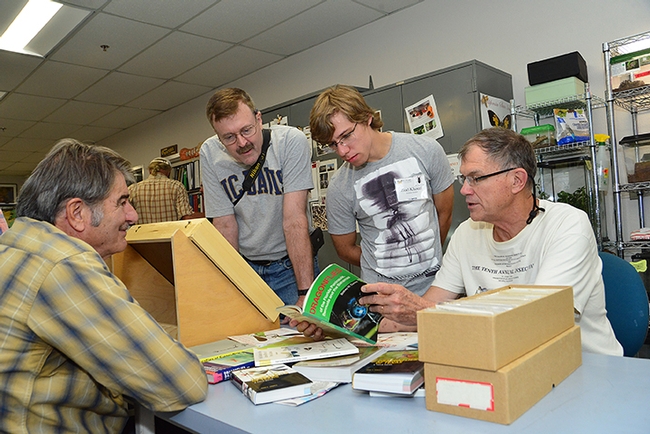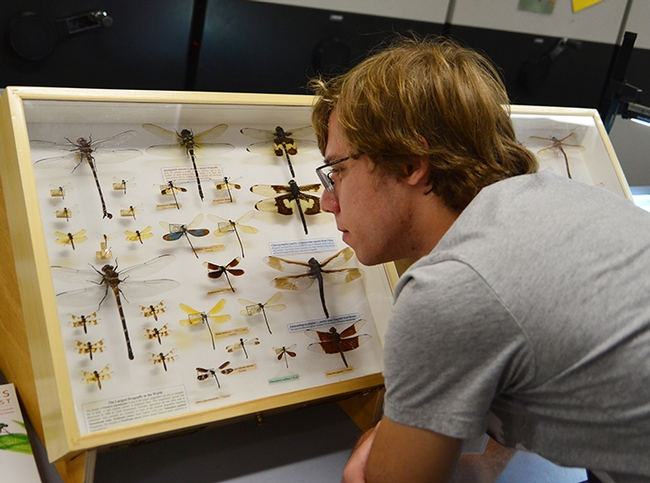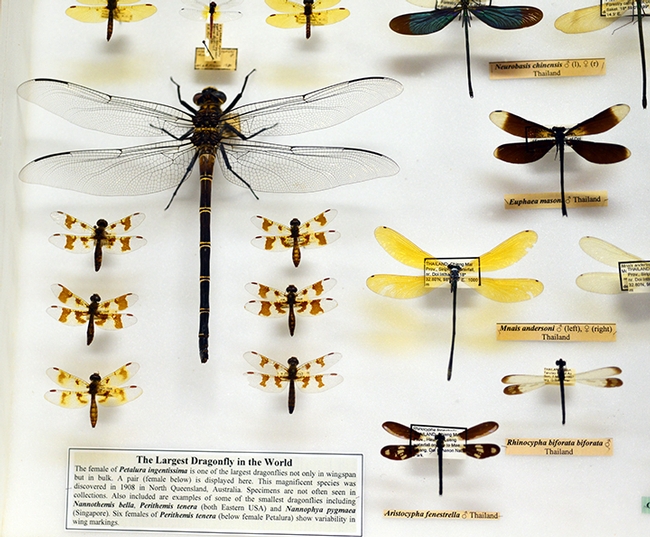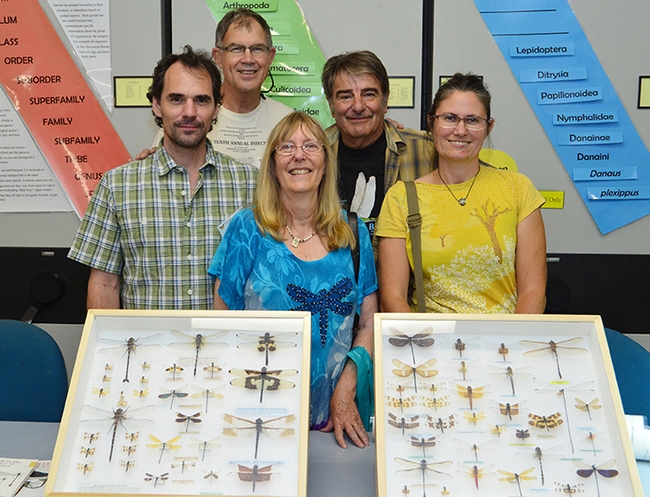- Author: Kathy Keatley Garvey
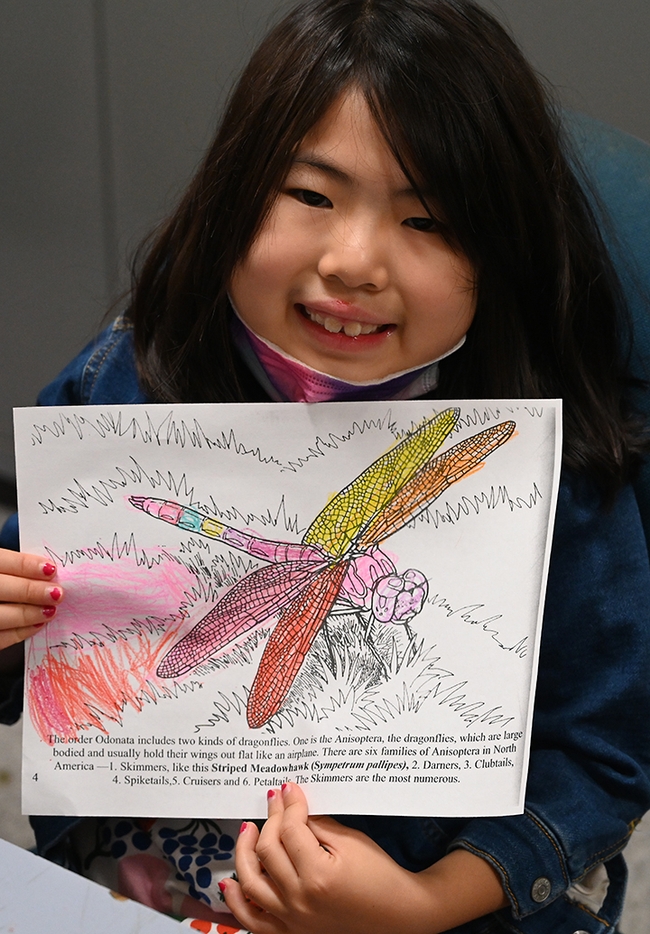
While dragonfly experts fielded questions from guests, over at the arts-and-crafts table, children and their families eagerly colored pages from Kathy Claypole Biggs' dragonfly coloring book, and created decorative dragonfly candles.
Bohart volunteers Barbara Heinsch of Davis and high school student Kate Phillips of Da Vinci Charter Academy staffed the table.
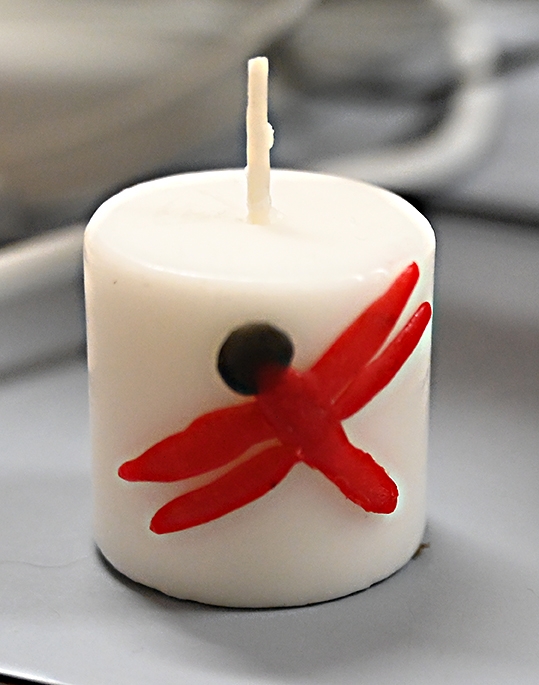
The dragonfly candlemaking project came with instructions:
- Take a small, pea-sized amount of beeswax.
- Roll it out so it is long and skinny (about 3 cm)
- Divide it into 2 equal parts (about 1.5 cm each)
- Press a long one on the candle for the thorax/abdomen
- Roll the other half into a ball and press that on for the head/wings
- Take a pea-sized amount of beeswax
- Roll it out so it is long and skinny (about 4 cm)
- Divide it into 4 equal parts (about 1 cm each)
- Press these onto the candle as wings near the thorax.
Biggs' coloring book, Dragonflies of North America: A Color and Learn Book with Activities, with illustrations by Tim Manolis, showcases 37 common species of dragonflies and damselflies.

Biggs usually participates in the Bohart Museum dragonfly open houses, but was out of the country at the time. Her biography indicates that she worked as an educator in her hometown of Sebastopol in the Gravenstein Union School District for 18 years before becoming an author/publisher/dragonfly/wildlife pond spokesperson.
At the open house (see more information and images on Bug Squad), a sign, "Meet the Dragonfly Experts," greeted the more than 220 guests. The experts featured:
- Rosser Garrison, retired from the California Department of Food and Agriculture (Pest Diagnostics Branch of Plant Health and Pest Prevention Services)
- Christopher Beatty, a visiting scholar in the Program for Conservation Genomics at Stanford University
- Bohart associate Greg Kareofelas
- UC Davis doctoral student Christofer Brothers of the laboratory of Professor and Chancellor's Fellow Stacey Combes, Department of Neurobiology, Physiology and Behavior, College of Biological Sciences.
- Andy Rehn, stream ecologist with the California Department of Fish and Wildlife and a UC Davis doctoral alumnus
Also sharing her expertise was senior biologist Sandra Hunt-von Arb of Pacific Northwestern Biological Resources Consultants, Inc.
The Bohart Museum, founded in 1946 and named for UC Davis professor and noted entomologist Richard Bohart, is located in Room 1124 of the Academic Surge Building, 455 Crocker Lane, UC Davis campus. Directed by Lynn Kimsey, UC Davis distinguished professor of entomology, it houses a global collection of eight million insect specimens, as well as the live "petting zoo" and an insect-themed gift shop stocked with t-shirts, hooded sweatshirts, books, posters, jewelry, collecting equipment and more. It is open to the public from 8 a.m. to noon, and 1 to 5 p.m., Mondays through Thursdays. For more information, access the website or contact bmuseum@ucdavis.edu.
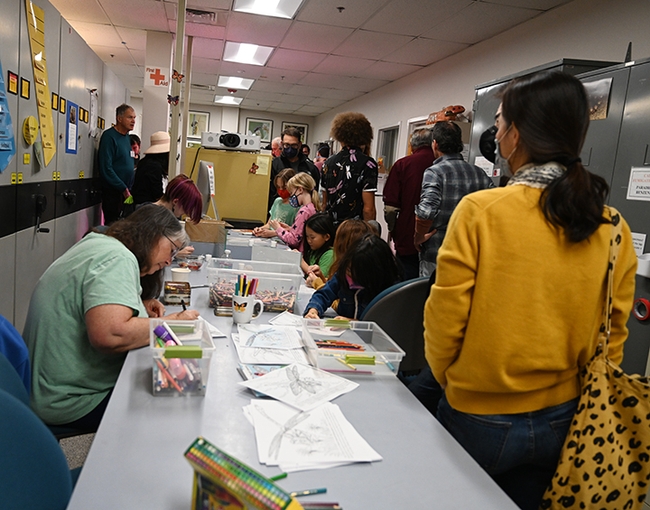
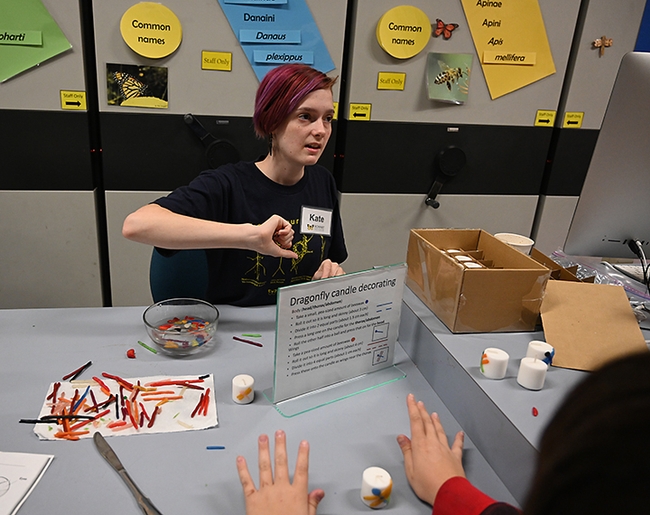
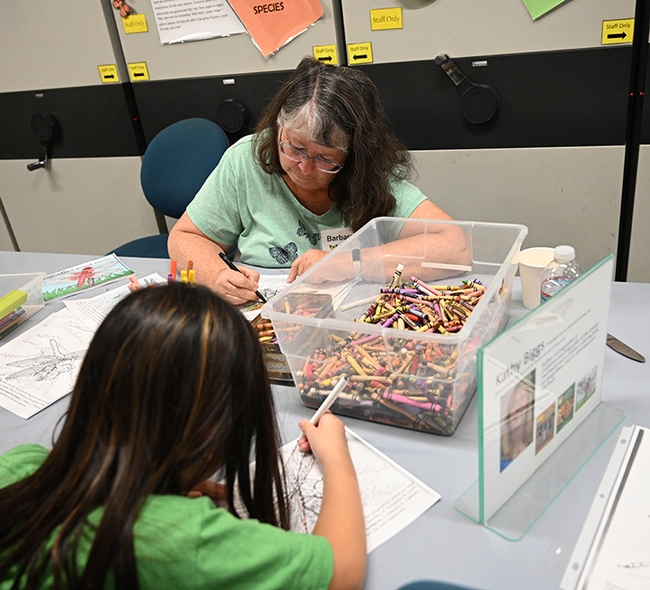
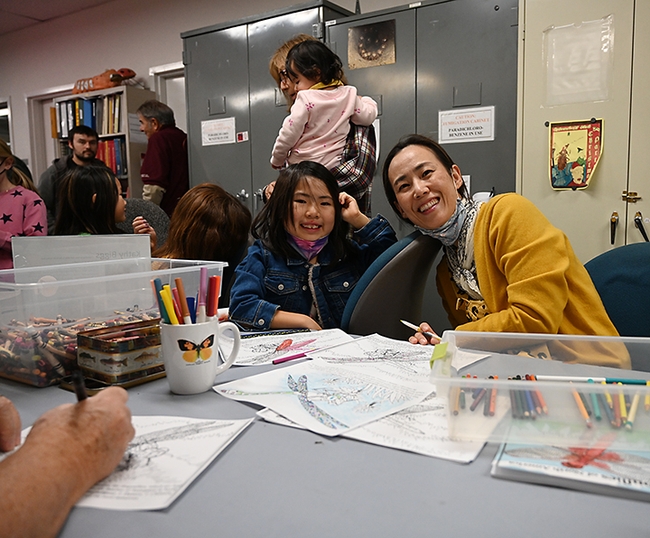
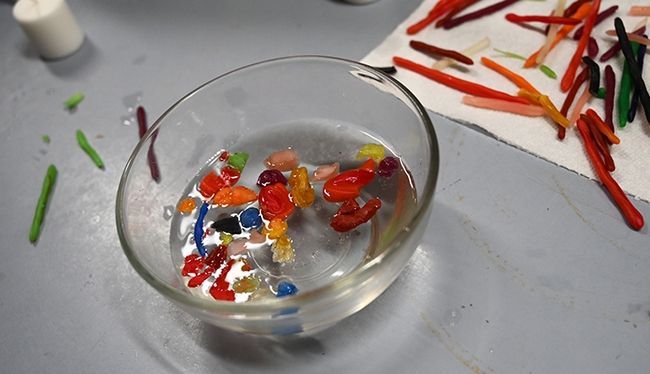
- Author: Kathy Keatley Garvey
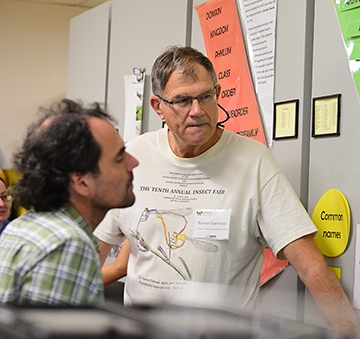
They're an ancient insect. Their ancestors existed before dinosaurs. Indeed, fossil records show that they were the world's largest flying insects, some with wingspans measuring three feet.
Visitors at the Bohart Museum of Entomology open house last Sunday, Sept. 20 at the University of California, Davis, learned those facts--and more--when dragonfly expert Rosser Garrison of the California Department of Food and Agriculture (CDFA) showcased his work.
Garrison, senior insect biosystematist in the CDFA's Plant Pest Diagnostics Branch, Sacramento, showed part of his worldwide collection of dragonflies and answered questions from the eager guests. He has researched and collected dragonflies throughout much of the world, including Puerto Rico, Argentina and Costa Rica.
Of the world's 6000 described species of dragonflies, Garrison has collected representatives of some 3500 different species. His collection totals 45,000 specimens.
Garrison displayed “The largest dragonfly in the world," Petalura ingentissima. This magnificent species, he said, was discovered in 1908 in North Queensland, Australia. Specimens are not often seen in collections. Among his other specimens: some of the smallest dragonflies including Nannothemis bella, Perithemis tenera (both eastern United States) and Nannophya phymaea (Singapore).
Some interesting facts about dragonflies:
- Dragonfly relatives existed before the onset of the dinosaurs---Triassic Period, 250 to 200 million years ago
- They have a primitive flight mechanism compared to other insects, bees, butterflies, beetles and flies.
- Dragonflies mostly mate on the wing.
- They are not poisonous and they do not sew up people's ears (“devil's darning needles”). However, one group of large dragonflies are called—appropriately—"Darners."
- Larvae have a prehensile foldable lower lip unique in insects; it is used for capturing prey like mosquito larvae or even small fish.
Garrison's research has resulted in more than 80 published papers and book chapters. He served as the senior author of two recently published volumes, Dragonfly Genera of the New World. An Illustrated and Annotated Key to the Anisoptera (2006), and Damselfly Genera of the New World. An Illustrated and Annotated Key to the Zygoptera (2010), both published by The Johns Hopkins University Press). He has also contributed chapters on invertebrate ecology for The Food Web of a Tropical Rain Forest (Chicago University Press, 1996) and Manu. The Biodiversity of Southeastern Peru (National Museum of Natural History, 1996). Since January 1998, he has edited Odonatologica, the quarterly journal of the Societas Internationalis Odonatologica.
Garrison holds two degrees from the University of California, Berkeley: his master's degree in 1974 and his doctorate in 1979. His doctoral dissertation explored “Population Dynamics and Systematics of the Damselfly genus Enallagma of the western United States (Odonata: Coenagionidae) 1979," published in 1984.
Among those attending were several other dragonfly experts/enthusiasts:
- Andrew Rehn, a stream ecologist with the California Department of Fish and Wildlife, who received his doctorate in entomology (dissertation on dragonflies) at UC Davis in 2000 with major professor Lynn Kimsey, director of the Bohart Museum and professor of entomology at UC Davis
- Kathy Claypole Biggs of Sebastopol and McCloud, author of Dragonflies of California and Dragonflies of the Greater Southwest and a children's coloring book on dragonflies
- Sandra Hunt-von Arb, senior biologist at the Pacific Northwestern Biological Resources, McKinleyville, Calif (she started Western Odonata on Facebook on Feb. 8 and leads dragonfly workshops in Northern California; and
- Greg Kareofelas, Bohart Museum associate who is a naturalist and photographer who studies dragonflies, butterflies and other insects. He and Fran Keller (doctorate in entomology from UC Davis) created the dragonfly and butterfly posters available for sale at the Bohart.
The dragonfly open house was the first of the academic year. Other weekend open houses scheduled:
Saturday, Dec. 5, 1 to 4 p.m.: “Keep Calm and Insect On.”
Sunday, Jan. 10 from 1 to 4 p.m.: “Parasitoid Palooza II”
Saturday, Feb. 13: Biodiversity Museum Day
Saturday, April 16, 10 a.m. to 3 p.m.: UC Davis Picnic Day
Saturday, July 31, 8 to 11 p.m.: “Celebrate Moths.”
The Bohart Museum, located in Room 1134 of the Academic Surge Building on Crocker Lane, houses a global collection of nearly eight million specimens, including 469 different species of dragonflies. It is also the home of the seventh largest insect collection in North America, and the California Insect Survey, a storehouse of the insect biodiversity. Noted entomologist Richard M. Bohart (1913-2007) founded the museum. It is open to the public Monday through Thursday, from 9 a.m. to noon and from 1 to 5 p.m.
More information on the Bohart Museum is available by contacting (530) 752-0493 or emailing bmuseum@ucdavis.edu. Tabatha Yang (tabyang@ucdavis.edu) is the public education and outreach coordinator.
